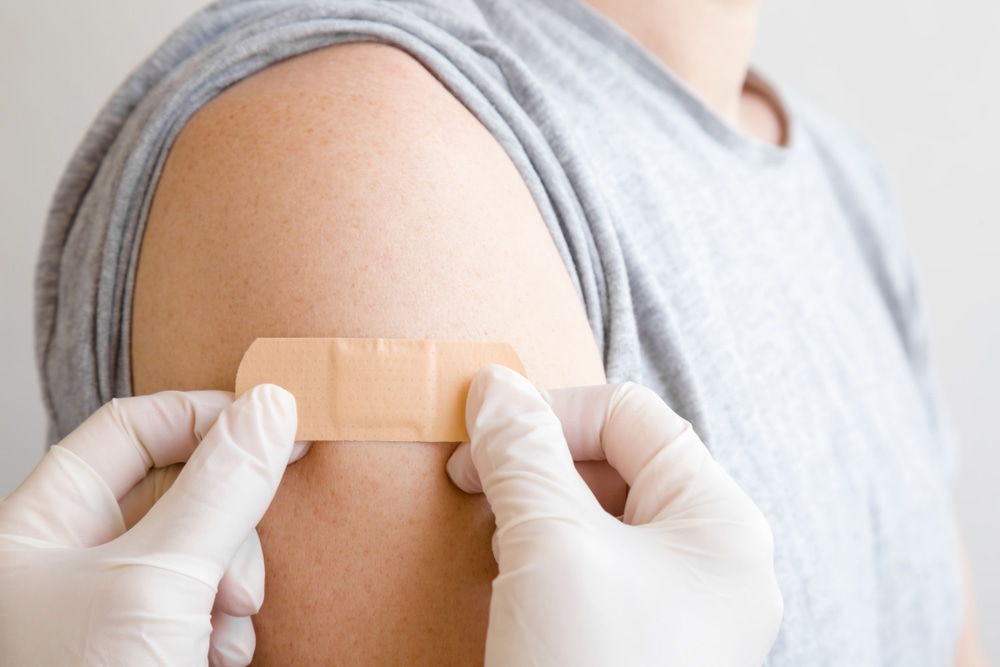Hope and relief
Vaccines are coming. When news broke in November of viable COVID-19 vaccine candidates emerging, the world’s collective sigh of relief was almost palpable.
Stock markets surged. Social media feeds shifted to an optimistic tone that had been absent for months. Even cautious public health officials were, well, cautiously optimistic.
Finally, light at the end of a long, exhausting tunnel. But one month later, as the first doses are administered in the UK, our tone has shifted again.
Vaccine hurdles
COVID vaccines are undeniably our most powerful defense against COVID, but they are merely one tool in our expansive kit. Leading experts in infectious disease and vaccine development have been quick to caution that vaccines are not instant cures.
[The vaccine] is not a silver bullet. What we need is surveillance to be stronger. We need public health measures because this is our best weapon and you need to use it well.
— Stéphane Bancel, CEO, Moderna
Despite the record-breaking speed of development, there are still hurdles to surpass before most of the world’s population will be vaccinated. The reality is that we will be living with COVID for many months, possibly years, for several reasons:
- Production: These early vaccines require a double dose, weeks apart. This means 15+ billion doses are needed for a global population of over 7 billion. To produce this many doses takes time. A lot of time.
- Distribution: Delivering enough vaccines to all corners of the world will not be easy. Especially when some vaccines require cold storage beyond standard freezer temperatures. Many remote and developing regions in the world simply do not have access to suitable storage and offer unique logistic challenges. And assuming a successful deployment of the first dose, the same recipients must then receive a second dose within a specific timeframe.
- Effectiveness: No vaccine is ever 100 percent effective. And an optimal 90% efficacy rate will still leave many vulnerable to infection. It also remains unknown if vaccinated individuals can still be asymptomatic carriers of COVID and infect others. Plus, the length of post-vaccination immunity is unclear. Not all coronavirus strains will be covered by that first vaccine.
- Priority groups: Most countries are rightfully prioritizing initial doses for their most vulnerable citizens first. That includes healthcare and essential workers, long-term care residents and those who are immunocompromised. That means many others will have to wait their turn for many months to come.
- Adoption: Not everyone will choose to be vaccinated. And some, for medical reasons, will not be eligible. Like other vaccine programs, we will rely on herd immunity to protect the majority, but this will require more time.
Continued diligence
Any vaccine limitations or logistical challenges should not diminish our hope, but rather serve as a reminder to remain diligent in the meantime.
After almost a year of living with a relentless pandemic, we have learned a lot about viral transmission, human behavior, and the best ways to prevent exposure and infection. Science has confirmed for us what is effective—and what isn’t. The COVID-safety playbook offers no short cuts. Instead, it confirms that our safest path to victory remains a multi-layered strategic approach: social distancing, face masks, hand washing, proper ventilation, surveillance, and testing.
Point-of-care testing
Specifically, point-of-care rapid testing provides the results people need—whenever and wherever they need them—allowing them to get back to work/school/life sooner. A PCR-based device applies the “gold standard” of COVID testing according to the CDC and WHO and is the same diagnostic technology used by offsite labs to process results—often in days. A point-of-care PCR-device, such as the Hyris bCUBE, can confirm positive cases—often in asymptomatic carriers—within two hours. It is the same genetic testing technology, but onsite. No offsite labs. No wait times. Just accurate results to let us live our lives in confidence.
Our safest path to victory remains a multi-layered strategic approach: social distancing, face masks, hand washing, proper ventilation, surveillance, and testing.
And it’s not just for today. The world is changed. Beyond vaccines, our long game must factor in future viral threats. Improved ventilation systems and air quality will no longer be optional in building design. Investments in the right point-of-care device today capable of assessing tomorrow’s pathogens will enable quick future action. Businesses and building owners will identify pathogens, implement the established risk-management measures and avoid disruption.
